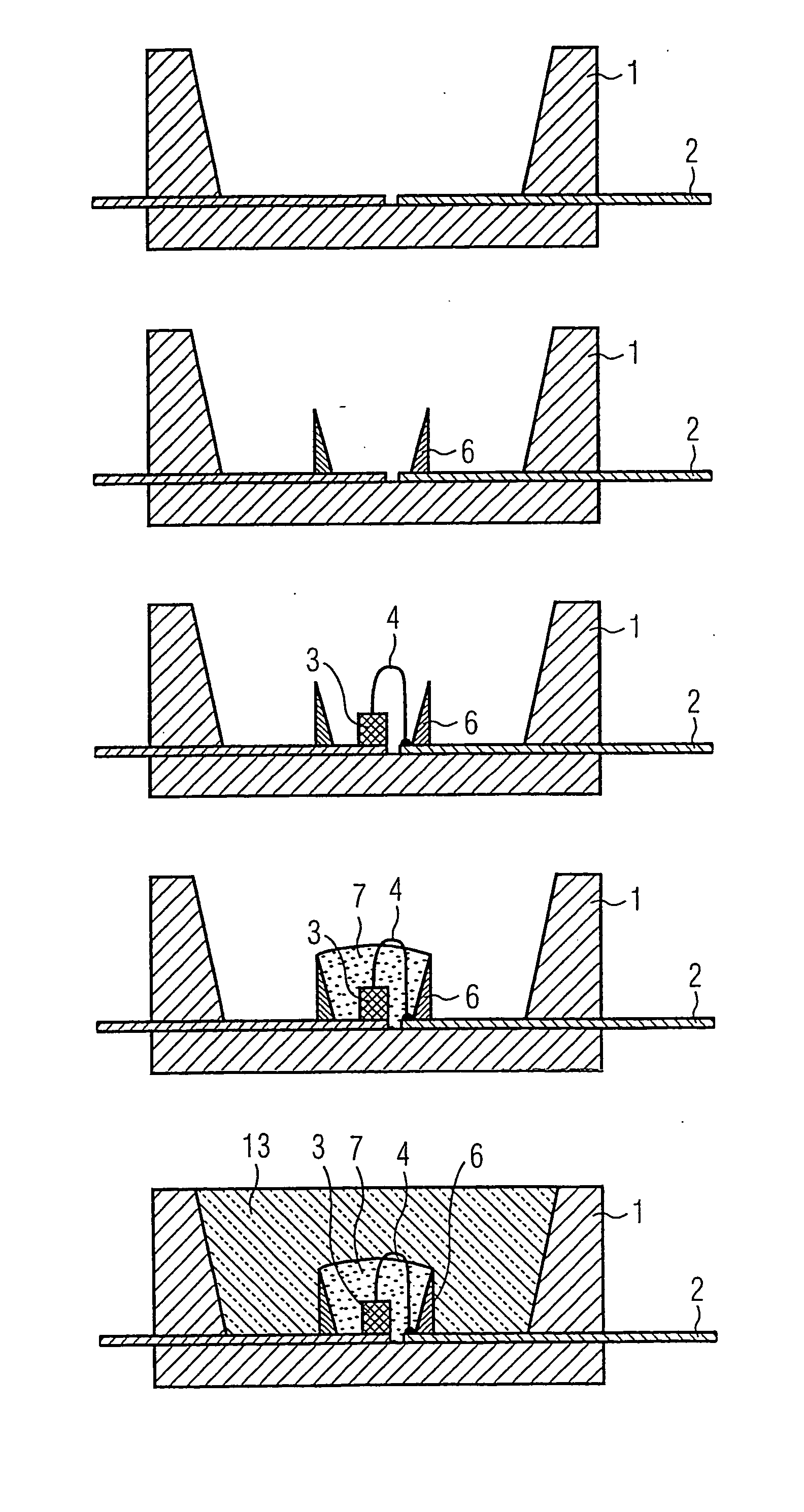Radiation emitting semiconductor component with luminescent conversion element
a technology of luminescent conversion elements and semiconductor components, applied in semiconductor/solid-state device manufacturing, semiconductor devices, electrical devices, etc., can solve the problem of severe chromatic errors in optical images
- Summary
- Abstract
- Description
- Claims
- Application Information
AI Technical Summary
Benefits of technology
Problems solved by technology
Method used
Image
Examples
Embodiment Construction
[0034] In the following disclosure, like numerals refer to like elements. The semiconductor component shown in FIG. 1, according to the invention, is a standard casing body material 1. The body may be a unibody made from a single piece of material. This can for example be an LED-casing installed on the surface which comprises thermoplast. The body or base body includes an interior recess, open internal region or groove defined by side walls 5. The side walls 5 are slightly slanted and act as a reflector for radiation produced there between. A conductor frame 2 is integrated into the body material 1, running within the base body so as to define a floor for the open internal region and specific areas described below. A semiconductor body 3 is bonded a the chip service area 12 located atop conductor frame 2. The semiconductor body is electrically connected by a wire connection 4 with the wire service area 11 of the conductor frame 2. The bonding of the semiconductor body 3 can occur as...
PUM
 Login to View More
Login to View More Abstract
Description
Claims
Application Information
 Login to View More
Login to View More - R&D
- Intellectual Property
- Life Sciences
- Materials
- Tech Scout
- Unparalleled Data Quality
- Higher Quality Content
- 60% Fewer Hallucinations
Browse by: Latest US Patents, China's latest patents, Technical Efficacy Thesaurus, Application Domain, Technology Topic, Popular Technical Reports.
© 2025 PatSnap. All rights reserved.Legal|Privacy policy|Modern Slavery Act Transparency Statement|Sitemap|About US| Contact US: help@patsnap.com



